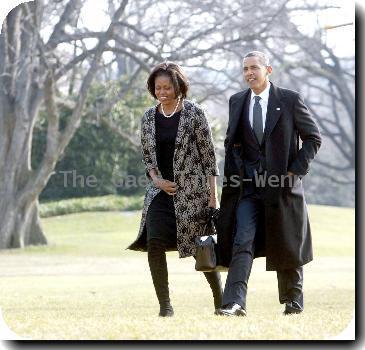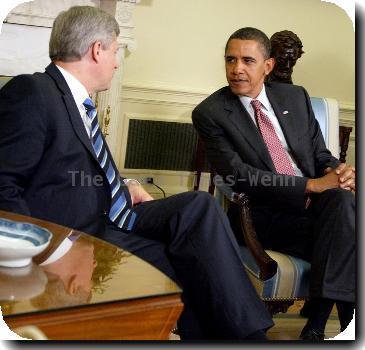CAPITAL CULTURE: For Team Obama, choosing the right setting in the mansion with a message
By Mark S. Smith, APMonday, August 9, 2010
CAPITAL CULTURE: White House backdrop is fine art
WASHINGTON — When President Barack Obama addressed the nation from the Oval Office for the first time, Americans knew in an instant the Gulf oil spill had become a full-blown crisis.
His prime-time speech, in a setting that bespeaks the power of the presidency, telegraphed a vital message: The spill is huge, but I’m on it.
The president’s house is filled with iconic backdrops — the gilt-trimmed East Room, the verdant Rose Garden, the stately Grand Foyer, to name just a few — and Obama has carefully employed them all to communicate with a public that’s still making up its mind on how he’s doing his job.
Choosing among these is an art, as much as a science. Each venue has its aesthetic — and political — pros and cons.
To those who manage the optics of presidential appearances, the White House is a mansion with a message.
“Every room within the White House tells a story,” said Daniella Gibbs Leger, who directs the choice for Obama. “We’ve used pretty much every nook and cranny. It’s all wonderful. It’s all rich in history. It all looks great.”
Take the East Room, the mansion’s largest, where Abigail Adams hung her wash, Abraham Lincoln’s body lay in state and cellist Pablo Casals played for the Kennedys. Most Americans know it for state dinners, bill signings and news conferences.
“It’s really the most formal you can get, particularly if you’re doing a nighttime news conference,” said Martha Joynt Kumar, a political science professor at Towson University and author of the book “Managing the President’s Message: The White House Communications Operation.” ”That’s what I think of as the political high-wire act.”
Obama’s first such news conference, in February 2009, drew an estimated 49 million viewers. “When you do that, you don’t want to waste their time,” said Kumar. “You’re there to tell them something important, and you’re going to use all the trappings of the presidency to do it.”
Yet after an initial flurry, Obama — like other recent presidents — has mostly shunned prime time in the East Room. President George H.W. Bush found the formality oppressive and held just two such news conferences, preferring to pop into the press briefing room for a seemingly spontaneous chat. His son showed a similar preference.
“It’s a much more intimate setting,” said Scott Sforza, who directed White House event-staging under the younger Bush. “He enjoyed the back and forth, and in most other locations you can’t be as close to the press corps as when you’re in the briefing room.”
The East Room was the setting for the very first news conference, held by Woodrow Wilson in 1913. But modern presidents have also held them in the Rose Garden and in the Eisenhower Executive Office Building, next door in the White House complex.
Nowadays, the Rose Garden is an all-purpose locale. Obama has used it to issue proclamations, offer reaction to world events and hold receptions. His predecessor gave war updates and pardoned Thanksgiving turkeys there. Both would step into the garden from the adjacent Oval Office to describe talks with foreign leaders.
“It does give the message to people that an important meeting has just taken place, and now you’re going to see the results,” Sforza said.
Some presidents may have spent too much time there. Gerald Ford, unsuccessfully seeking re-election in 1976, pursued a so-called “Rose Garden strategy” in which he stressed his White House leadership and avoided the campaign trail until October. The Rose Garden holds a bitter memory for Bill Clinton: He appeared there, head bowed, after the House impeached him.
As to the Oval Office, it remains a coveted destination for foreign leaders, who sit opposite the president in front of its famous fireplace. Other meetings — public and private — take place there, with lawmakers, generals and captains of industry.
But as a speech venue, the Oval Office can seem too stilted. Despite juggling two wars, a deep recession and a huge policy fight over health care, Obama gave his only prime-time speech there on the oil spill.
Recent presidents have found themselves turning to other venues for matters of war and peace. Obama announced his Afghanistan troop surge at the U.S. Military Academy at West Point. Bush spoke on his Iraq surge from the White House library.
And for his post-Sept. 11 speech on the invasion of Afghanistan, Bush chose the Treaty Room, on the mansion’s second floor, because its windows gave a view of the bustling traffic on Constitution Avenue. The visual cue: America is far from hunkered down.
“The president wanted to say to the terrorists, ‘Listen, we’re still in business here. We’re not running for the hills,’” Sforza said.
Bush gave other big speeches from the Grand Foyer, standing at a lectern. Obama has used the setting, too. “Presidents often are not comfortable seated in the Oval Office. They tend to look stiff,” Kumar said.
Surprisingly often, the choice of setting comes down to logistics. If a big audience is expected, that pretty much dictates the East Room, the Rose Garden or — for the biggest crowds — the South Lawn.
Obama’s health care plan was signed with much fanfare in the East Room, with the audience facing the mansion’s central hallway. “You can fit more people in the room that way,” Gibbs Leger explained. An extra 20 seats on top of the usual 200.
Timing is also a consideration. Using the Grand Foyer blocks White House tours, so events there are often held late in the day.
Sometimes, the goal is simply a visual change of pace. In an era of nonstop news coverage, maintaining interest is a big concern. Hence Obama does interviews and his weekly Internet addresses in the library, the Map Room, the Blue Room and the Diplomatic Reception Room, among others.
Walking into the Roosevelt Room for remarks the other day, Obama told reporters: “Trying a little change of venue here. Mix it up.”
Other times, the goal is minimizing setup time for lights and cameras — and with it the impact on Obama’s schedule. For brief remarks, the top venues include a lectern on the South grounds, between the Oval Office and the Marine One helicopter waiting to take Obama on an out-of-town trip.
On occasion, location is dictated by what the president wants to avoid: questions.
“Some places are easier to get out of than others,” Kumar said.
Tags: Arts And Entertainment, Barack Obama, Bill Clinton, District Of Columbia, Funerals And Memorial Services, North America, State Funerals, United States, Washington

